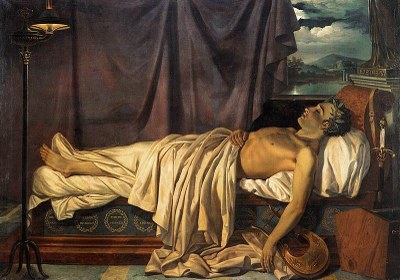Lord Byron on his deathbed
by
—
last modified
2023-08-28T14:10:24+02:00
Musea Brugge © Lukas-Art in Flanders
Musea Brugge © Lukas-Art in Flanders
Joseph Dionysius Odevaere (1775–1830), Lord Byron on his deathbed, oil on canvas, 166 x 234,5 cm, ca. 1826; source: Musea Brugge © Lukas-Art in Flanders, photo Hugo Maertens.
Graecomania and Philhellenism@Graecomania and Philhellenism@(ÜB)@freigabe
Greek War of Independence (1821–1832)@Greek War of Independence@(BE)@freigabe
Political Networks@Political Networks@(ÜB)@freigabe

